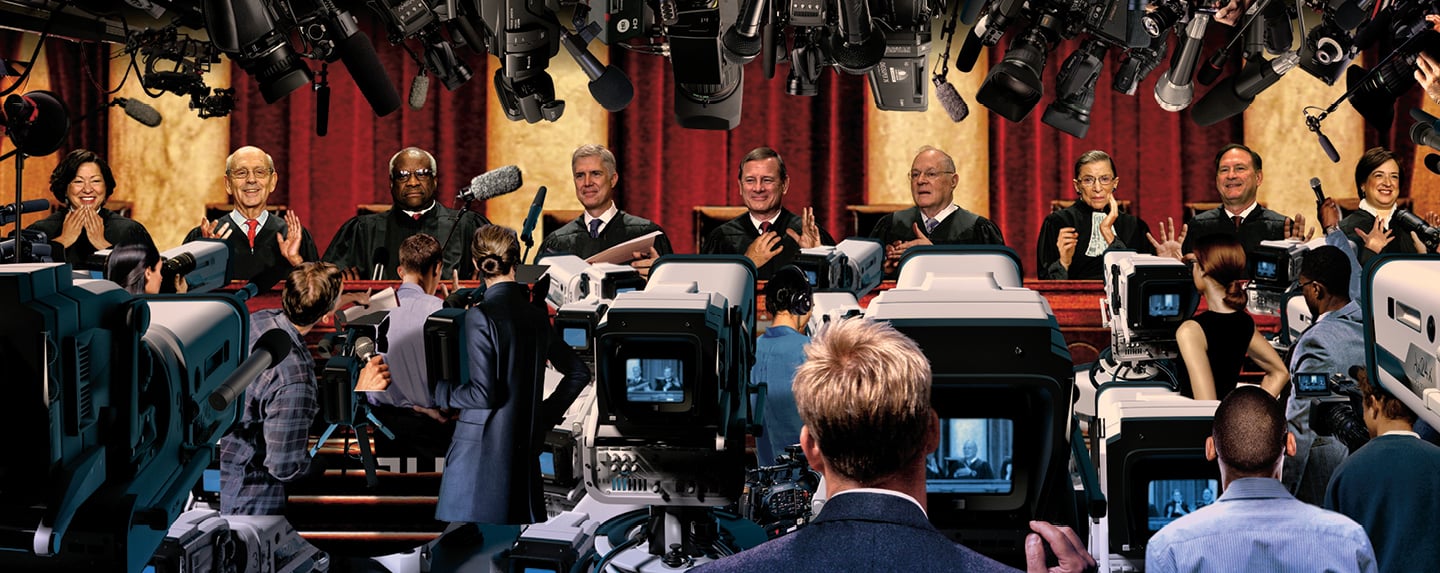The current Supreme Court term could be one of the most important ever. The docket includes cases involving voting rights and the dispute over whether a baker who opposes same-sex marriage may deny his services to a same-sex couple. Both of these cases are of immense interest to the American people and were argued in open, public hearings. But because the Court won’t allow cameras in its courtroom, it was impossible for most Americans to watch the debate. This blackout is shameful and deeply problematic.
The justices are public officials whose salaries are paid by the taxpayers. The only times the justices appear regularly in public performing their official duties are during oral arguments and when they announce their decisions. Televising these proceedings would allow Americans to see the Court at work and watch the justices tackle vital issues while remaining civil and polite—a positive example in such a partisan era.
Law professors could use videos of Court proceedings as important teaching tools. Museums could display the most important arguments for historical purposes.

